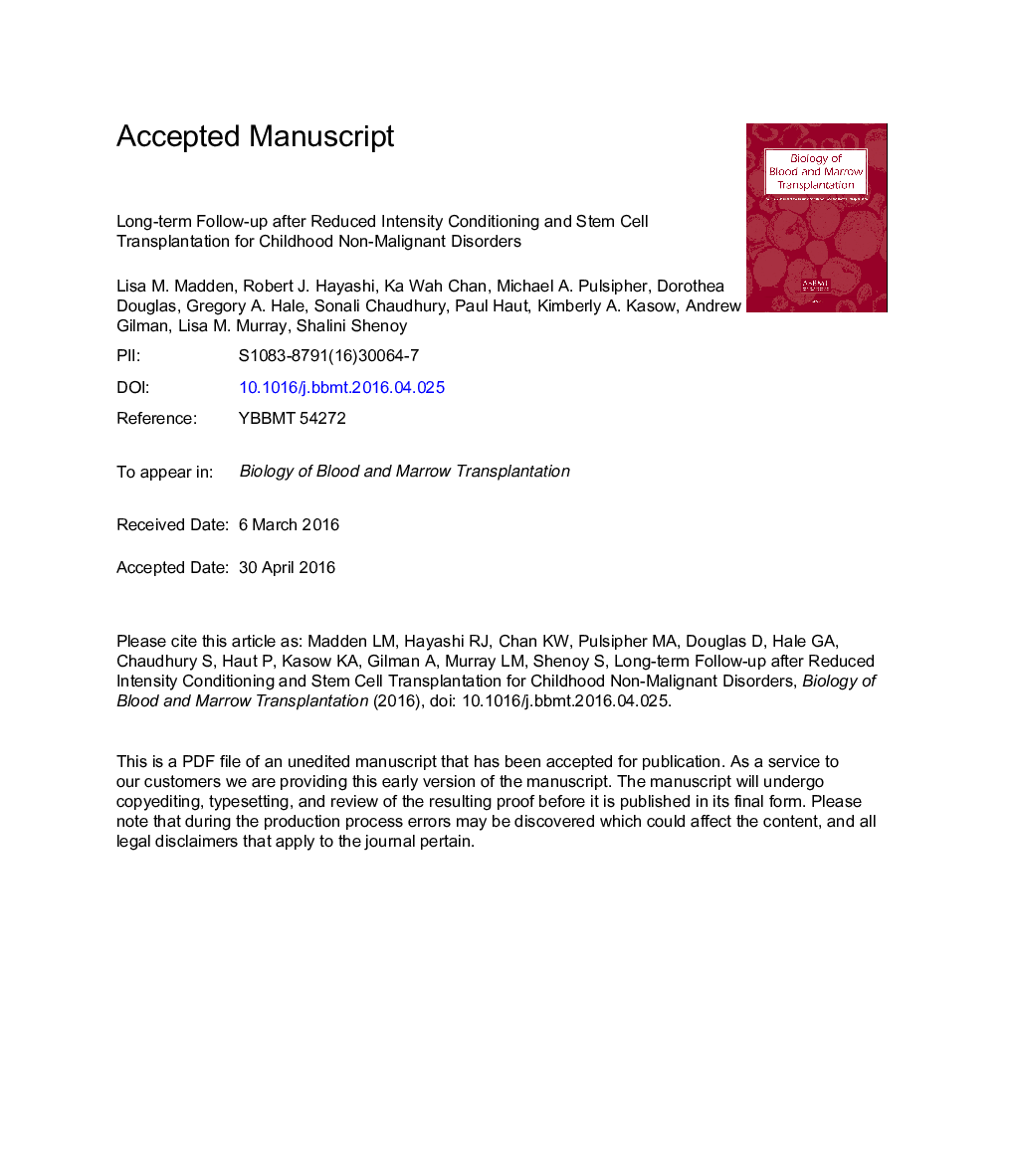| Article ID | Journal | Published Year | Pages | File Type |
|---|---|---|---|---|
| 8430866 | Biology of Blood and Marrow Transplantation | 2016 | 31 Pages |
Abstract
Reduced-intensity conditioning (RIC) before hematopoietic stem cell transplantation (HCT) in children could result in fewer complications during follow-up compared with myeloablative regimens. Hence, many RIC regimens are under investigation, but long-term follow-up is essential. We describe late follow-up beyond 2 years post-HCT in 43 children with nonmalignant disorders who underwent related or unrelated donor (56%) HCT on a multicenter study using a RIC regimen (alemtuzumab, fludarabine, and melphalan) followed by bone marrow (n = 30), peripheral blood (n = 3), or umbilical cord blood (n = 10) HCT for immune dysfunction, bone marrow failure, metabolic disorders, or hemoglobinopathy. Recipients (median age, 7.5 years; range, 3 to 26) underwent HCT 2 to 8 years (median, 3.1 years) before this report. Full donor (67%) or stable mixed chimerism (33%) was noted without late graft rejection. Five patients (12%) required systemic immunosuppression therapy (IST) beyond 2 years post-HCT for graft-versus-host disease (GVHD); 2 patients died 38 and 79 months later, whereas the others improved, enabling an IST wean. Overall, 17 complications were documented in 10 patients (23%). Complications not related to GVHD included hypothyroidism (n = 2), low grade neoplasms (n = 2), and delayed puberty (n = 1). One patient with GVHD had ovarian failure; all other postpubertal females resumed normal ovarian function. Twenty-seven of 28 school-age recipients were functioning at grade level. RIC HCT recipients thus had few regimen-related toxicities during long-term follow-up. However, objective long-term follow-up is still necessary to identify complications so timely intervention may be planned.
Related Topics
Life Sciences
Biochemistry, Genetics and Molecular Biology
Cancer Research
Authors
Lisa M. Madden, Robert J. Hayashi, Ka Wah Chan, Michael A. Pulsipher, Dorothea Douglas, Gregory A. Hale, Sonali Chaudhury, Paul Haut, Kimberly A. Kasow, Andrew L. Gilman, Lisa M. Murray, Shalini Shenoy,
